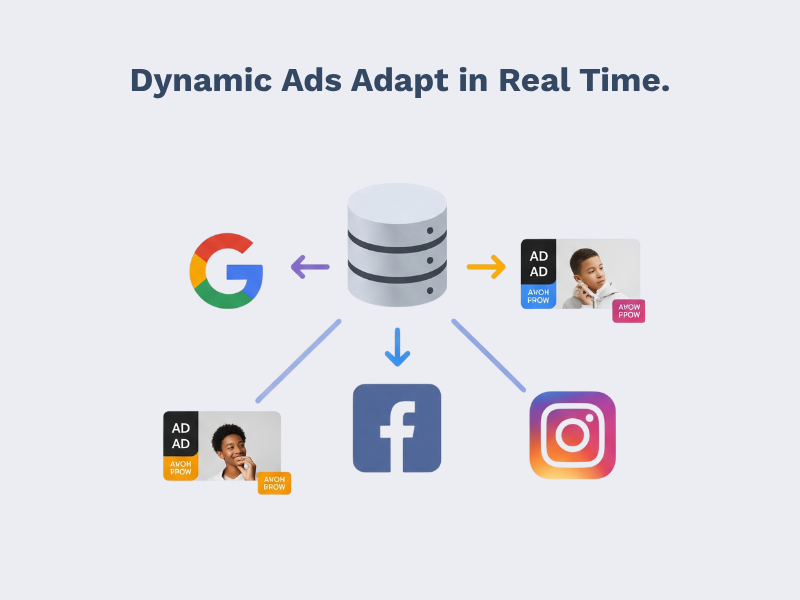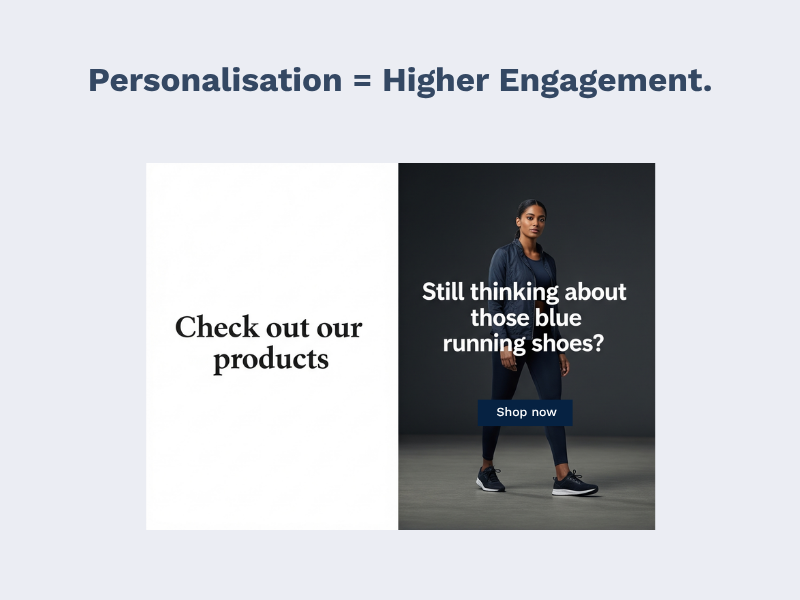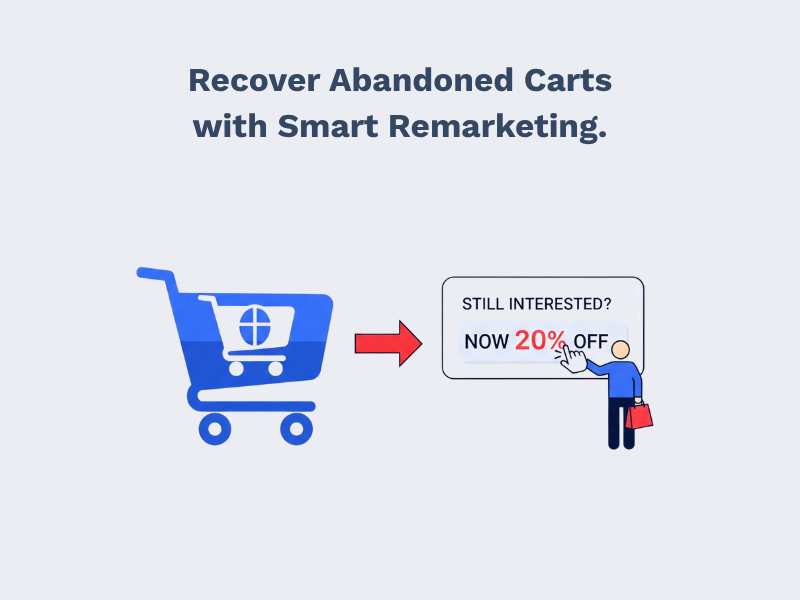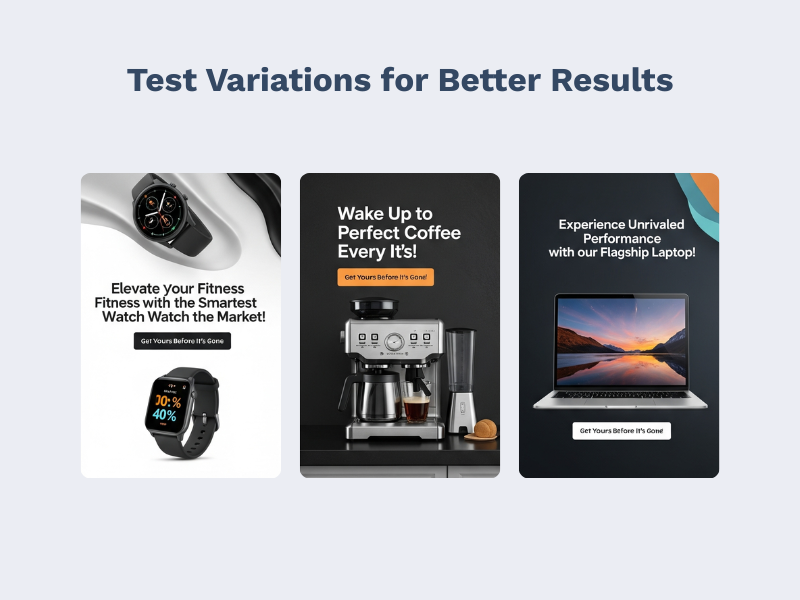Picture this: someone visits your online store, browses a few products, maybe even adds one to their basket and then disappears without buying. Hours later, they’re scrolling through Instagram and see an ad featuring that exact product, now paired with a limited-time offer. This time, they click. This time, they convert.
That’s the power of dynamic ad conversions.
According to WebFX, website visitors who are retargeted with display ads are 70% more likely to convert than those who aren’t. And as highlighted by The Institute of Career Excellence (TICE), India, retargeted users are 43% more likely to convert than first-time visitors. With cart abandonment rates hovering around 70%, TICE also reports that remarketing can recover 26% of abandoned carts, making it a powerful tool to bring undecided shoppers back to the checkout.
In an age where online shoppers are bombarded with choices, it takes more than a one-size-fits-all message to win them over. Personalised, behaviour-driven advertising helps brands cut through the noise, and personalisation in ads, powered by dynamic ad technology, is what turns passive browsers into active buyers.
In this blog, we’ll break down how dynamic product remarketing, tailored messaging and smart creative strategies can dramatically boost conversions and bring hesitant customers back into the buying journey.

Dynamic ads are a powerful form of online advertising that automatically update content based on user behaviour. Rather than showing a static message to every viewer, these ads pull in real-time data to personalise what’s displayed, making the experience more relevant and more likely to lead to dynamic ad conversions.
Major ad platforms such as Facebook, Google, Instagram and TikTok all offer dynamic ad formats. These platforms integrate with your product catalogue or website activity to serve ads that are tailored to individual users.
By speaking directly to what users care about, dynamic ads eliminate the guesswork and replace generic messaging with precision targeting.

When it comes to digital marketing, personalisation is no longer optional; it’s expected. Shoppers are more likely to engage with content that feels tailored to them, and that’s where personalisation in ads plays a crucial role.
Generic, one-size-fits-all campaigns often fall flat because they lack context. They don’t reflect the shopper’s journey, preferences, or intent, so they’re easy to ignore.
By connecting the dots between user behaviour and ad content, personalisation fuels stronger dynamic ad conversions and a smoother path to purchase.

Online shoppers abandon carts for all sorts of reasons, price hesitation, last-minute distractions, or simply a lack of urgency. But that doesn’t mean the sale is lost. With dynamic product remarketing, you can bring those hesitant buyers back into the funnel with tailored, timely ads.
Dynamic remarketing uses data from your website to retarget users with customised product ads across platforms like Google, Facebook and Instagram. These ads feature the exact items a user viewed or added to their cart, giving them a personalised nudge to return.
To increase urgency, these ads often include messaging like:
These triggers tap into behavioural psychology to push shoppers closer to action, making dynamic ad conversions far more likely.
Dynamic product remarketing is one of the most effective tools for personalisation in ads, because it turns previous interest into future action.

To maximise your return on dynamic ads, it's not enough to just set them up; you need to optimise every detail to create high-performing experiences that drive conversions.
Your visuals are the first thing users notice. Crisp product shots, lifestyle imagery and short-form video can dramatically increase engagement, especially on visual platforms like Instagram and TikTok.
Speak directly to the user’s interests or recent behaviour. Instead of “Check out our range,” try “Still thinking about the navy suede boots? They’re almost gone.” That level of relevance boosts both clicks and dynamic ad conversions.
The right CTA can make all the difference. Test variations like:
Small tweaks in wording can lead to measurable improvements in response rates.
By fine-tuning the creative elements, you transform dynamic product remarketing from good to great and convert more undecided shoppers into loyal customers.
At Mr Digital, we worked with an e-commerce client managing a diverse product catalogue across multiple categories. To improve conversion rates, we focused on personalisation and creative testing, two key components of any successful dynamic ad strategy.
By A/B testing the design of “Sale” icons and refining product listings based on user engagement, we improved how products were presented in retargeting campaigns. The result? A 157% increase in new users, with more targeted, higher-intent traffic flowing to the site and stronger overall campaign performance.
This kind of optimisation proves that dynamic product remarketing doesn’t need to be complicated; even simple adjustments can help convert undecided shoppers and reduce wasted ad spend.
If you're still relying on static campaigns to drive results, you're leaving money on the table. Dynamic ad conversions aren’t just a trend; they’re a proven strategy for turning browsing behaviour into buying action.
By combining personalisation in ads, dynamic product remarketing and creative optimisation, you create a powerful, performance-driven sales funnel that meets shoppers where they are and nudges them toward the checkout.
The key is to test, adapt and refine. With the right strategy, your ads can go from forgettable to unmissable.
Want to boost conversions with personalised dynamic ads? Let’s build a campaign that turns undecided shoppers into buyers.